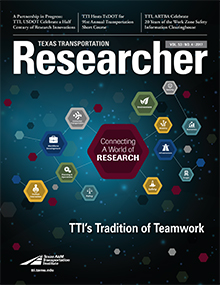Transportation project design and construction, even under the best of circumstances, are challenging for all concerned — the agency paying for the project, the engineer designing it, the contractor building it, and the travelers waiting on its completion.

Transportation agencies face numerous obstacles regarding utilities, including a lack of accurate information about utility facilities that may cause problems and how to resolve those conflicts. The impacts of these inefficiencies include:
- damage to utilities, along with costly and time-consuming repair;
- delays in project completion, leading to increased project costs;
- unnecessary utility relocations;
- frustration for travelers; and
- overall negative public opinion about the project.
Problems with utilities are among the most common causes of transportation project-cost overruns and schedule delays. However, many agencies are still unaware of the risks of failing to prioritize utility issues properly. To help sponsors navigate utility issues, the Texas A&M Transportation Institute (TTI) has established its new Utility Engineering Program under the leadership of TTI Senior Research Engineer Cesar Quiroga.
“Utility engineering is now a recognized specialty within the civil engineering profession,” says Quiroga, who recently completed a term on the board of governors of the newly established Utility Engineering and Surveying Institute (UESI) at the American Society of Civil Engineers. UESI boasts close to 3,000 members, several hundred of whom are based in Texas.
“Our goal is to bring about a paradigm shift from treating utilities as an afterthought in project delivery to considering the utility process as an integral component in all phases of project delivery,” Quiroga says. “Our vision is to promote utility engineering through leading-edge research, technology transfer and strategic partnerships.”
TTI’s new program capitalizes on the long history of utility-related projects that Quiroga and other TTI researchers have led over the years. TTI has played a critical role in many influential utility-related initiatives, as well as research and implementation projects, that have taken place at the state and national levels. The Institute has developed and implemented novel ways to manage utility conflicts, conducted technology transfer to professionals and technicians, and developed utility data models and databases, as well as utility permitting systems.
“The return on investment from proactively managing utility issues is huge,” Quiroga says. “By applying what we’ve learned, we can truly transform our practices to save time and money.”
The absence of proactive utility conflict management (UCM) in the past has yielded an abundance of construction site failures. In one case in July 2016, San Antonio contractors drilled into major water lines on two separate jobs on back-to-back days, straining repair crews who narrowly avoided a complete loss of water pressure. The resulting loss of service to 120,000 customers all at once would have been “catastrophic,” officials said.
Conversely, the application of UCM practices can translate into significant savings and disaster prevention. In Maryland, officials were able to avoid relocating a gas line, saving more than $500,000 and as much as six months in project delivery time.
Officials in Delaware have also seen the benefits of UCM. “Designers, coordinators, utility companies and construction engineers all seem to be onboard,” says Eric Cimo, a utility engineer with the Delaware Department of Transportation. “The utility conflict matrix — paired with utility coordination via our electronic utility permit application and training initiatives geared toward stakeholders — have all added to what I believe are positive developments in the field of utility engineering and utility management.”
The Texas Department of Transportation (TxDOT) has been a leading implementer of Federal Highway Administration–funded utility research, which has helped the department transform how it resolves utility conflicts in its projects. By factoring UCM into its planning process, TxDOT’s San Antonio District avoided relocating an existing water main, saving more than $1 million.
“The new approach adopted by TxDOT staff, consultants and utility partners consists of early coordination, extensive communication and design to avoid or minimize impacts to our utility partners,” states Anna Pulido, TxDOT’s utility manager for the San Antonio District. “This process produces a successful project that lets on schedule with no construction delay claims related to utilities.”

